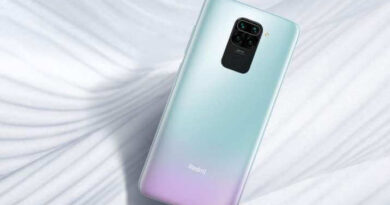What will the cell phones of the future look like?
In 2009, most cell phones didn’t have a big screen, didn’t access the internet with such speed and didn’t have such a powerful camera. In short, they were just phones, nothing smart! Since then, things have changed a lot: the devices have grown and gained a series of functions far beyond just making calls, such as mobile instant win games. The trend for the coming years is for the technology to continue to evolve, offering new features and applications. With that in mind, we’ve listed some technological advances that are likely to shape the future of cell phones. Check it out!
Minimal borders
Table of Contents
The concept of “minimum border” is an innovation in the design of smartphones that started to appear in 2017. The idea is to increase the frontal use to almost 100%, eliminating that little space between the screen and the side edges of the device. The first model to apply the minimal border was the Xiaomi Mi Mix. Samsung ‘s Galaxy line – especially with the S10 – is one of the great exponents that are continually betting on the improvement of mobile screens.
Shorter charging time, more autonomy
Most cell phone batteries are made up of lithium-ion cells, which already offers an interesting capacity. However, with the increase in the resources of our smartphones, it is necessary to find more efficient materials. In this sense, graphene is one of the main trends. This kind of crystallized form of carbon promises the production of fully rechargeable batteries in up to 12 minutes, in addition to having a capacity of 4800 mH, a number much higher than most current gadgets.
Wireless charging
There are models from Apple and Samsung that already offer wireless charging, in which you place the smartphone over a device that recharges the battery without the need for wires. The technology is still in the early stages of development, but the goal is to create technology that avoids leaving people “stuck” to chargers.
Folding screens
In 2019, Samsung launched the Galaxy Fold, one of the first foldable smartphones on the market. Manufacturers are still developing prototypes of the first generations of models that use this technology, and they still face some barriers. The first problem is to create a device that really folds like a sheet, and not one that leaves high edges on the sides. You also need to find specific functions that really motivate people to buy the phones, as well as improve the operating systems for the constant screen change!
Personal assistants
The technology of personal assistants is already present in cell phones – Hi Siri! – but does not offer great functionality to users. It is still easier to type a search than to use “Ok Google!”. However, the expectation for the future is that smartphones will offer really functional systems and that they become a kind of “friend” for people, organizing the routine and giving food tips, for example!
Speed
Technology evolves very fast. Today, we are already operating with 5G in some countries, including Brazil, with a speed 12 times higher than 4G.
Of course, this will change the way we access content. There is much more information that we will have access to, without blocking the video or having problems with video calls.
NFC
This is the technology that allows you to make payments just by touching your cell phone, for example. It makes it possible to transmit data at a very short range: about 10 cm.
Both devices need to have authorized the transaction for everything to go well. Otherwise, you would go around sending data everywhere!
Now, imagine how much NFC can contribute to security in data transmission and what types of applications can benefit from this technology? You can send a photo to your colleague just by bringing the two devices together!
Ultrasense
With this technology, physical buttons will no longer exist on the cell phone of the future. The ultrasonic sensors will do all the functions.
They can identify the user’s touch strength and pattern, which increases security without relying on passwords or facial recognition.
Oh, and since these sensors can be located anywhere on the device (not just on the screen), the way we handle digital games will also change.
Voice command
This is a very popular trend these days. Just say “OK, Google” and access various information, open GPS, an app to download music or make a call.
And everything indicates that we will increasingly have our hands free to control our smartphone or smartwatch by voice, with all the appliances in the house integrated and interacting through the Internet of Things (IOT).
Keep an eye out for a few more trends from the tech world for the next few years. If you have favorite tech trend, share it with us in the comments.



